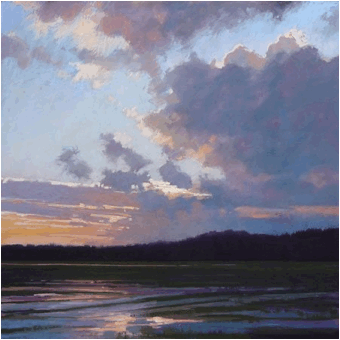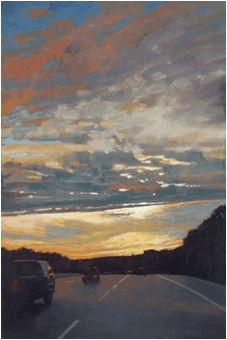
| Lesson 1 Lesson 2 Lesson 3 Lesson 4 Lesson 5 Lesson 6 Lesson 7 Lesson 8 Lesson 9 Lesson 10 Lesson 11 Lesson 12 Lesson 13 Lesson 14 Lesson 15 Lesson 16 Lesson 17 Lesson 18 Lesson 19 Lesson 20 Lesson 21 |
Art Is Easy to Make!Lesson 15 by Poochie Myers
|
Dark Tidings
But Haywood-Sullivan also uses two approaches for painting pastels that achieve powerful and intriguing dark effects--working on black paper and layering colors with alcohol washes. The result is that the dark areas in her pastel paintings command attention and enhance the glow of the highlights and give the paintings a solid, grounded appearance where the eye can rest. Here's a rundown of these two valuable pastel-painting techniques. Pastel Painting Using Black Paper
Although Haywood-Sullivan never uses pure-black pastel, she does not shy away from using black paper for her ground. "This allows me to get more light into a work," she says. "If I took a light-yellow pastel and put it onto a white paper, the yellow and white would look very similar. I would therefore try to compensate and make the yellow stand out by using a more highly pigmented yellow. On black paper, however, the difference is clearer, and I end up using more color. Such a dark ground also keeps me honest as an artist: It's more challenging to work on, it's not as forgiving, and it won't take unlimited layers. I have to think and plan more in advance." Alcohol Washes for Painting Pastels Two exciting possibilities for pastel painting that can give you eye-catching passages in your work. For more pastel instruction and pastel lessons that are keyed in to allowing you to grow exponentially in your skills and methods, consider the Essentials of Pastel Landscapes Premium and Deluxe Palettes that include six to eight book, DVD, and digital resources--so you can learn the way you want to. Enjoy! |


